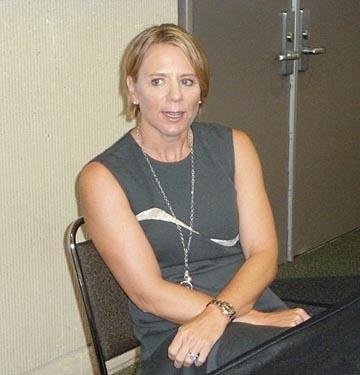 It's a challenge to find anyone in the business today who hasn't recognized that contraction is a necessary evil. It's even harder to find someone who is happy about it.
It's a challenge to find anyone in the business today who hasn't recognized that contraction is a necessary evil. It's even harder to find someone who is happy about it.
After eight years of staring at an evaporating pool of golf courses, declining rounds played and golfers walking away from the course forever, many realize the line between success and failure often can be razor thin, and it takes vigilance to ensure one stays on the right side of the line.
Many of the people walking the aisles at the Golf Industry Show in Orlando, Fla., said growing the game is an effort that must take place at the facility level rather than through industry initiatives to be successful.
"We have to spread and not just focus on the avid golfer and the golfer who is a scratch player," said Ron Jaworski, the former NFL quarterback and owner of five golf courses in New Jersey. "We have to teach people how to play the game and make the game more accessible and easier."
According to the National Golf Foundation, 3.7 million new golfers found their way to a course last year, however, 4.1 million walked off the 18th green and never looked back, meaning the game lost a net 400,000 players in 2013 alone.
Golf Datatech says rounds played fell by 5 percent last year, and a although 14 new courses were built across the country, another 157.5 in 18-hole equivalents closed up. Since 2006, there has been a net loss of 643 courses. The statistics show it's a simple matter of supply and demand. Interest in the game is dwindling and no one has found a cork big enough to stop that leak.
Additional NGF research shows that 57 percent of those 18-34 said they don't play golf because they think it is boring. Other barriers to attracting and retaining new players is the time it takes to play the game.
In her 15 years as a professional golfer, Annika Sorenstam won 72 LPGA events, 10 majors and more than $20 million in career earnings. As a player, she rarely gave much thought to the investment in time required to play a round of golf. As a mother and retired professional, she can't imagine spending 4.5 hours on a golf course.
"Then, I had all the time in the world," said Sorenstam, who was at GIS to collect the GCSAA's Old Tom Morris Award. "Now, there's no way we're going out there for 4.5 hours.
"People have families and other commitments. Where do you squeeze it in?"
Discussions as to how to make the game more inviting to those who don't want to invest four or five hours took place in Orlando just days before GIS at the PGA Merchandise Show. One of the ideas put forth by TaylorMade-Adidas CEO Mark King was 15-inch cups. The oversized cups would be easier to hit than the standard 4.25-inch golf hole, and when coupled with other initiatives such as shorter holes (achieved by moving tees forward into the fairway) and three- or six-hole loops, would make the game much less threatening for beginners or high handicappers.
Although he was not aware of King's 15-inch cup idea, Anthony Williams, CGCS, wasn't opposed to it, either. Stone Mountain Golf Club, a 36-hole state park facility near Atlanta where Williams is superintendent, is reliant on walk-up business for its survival. And with several other public-access courses nearby, he knows golfers have a choice when opening their wallets.
 "We're never going to grow the game if people are never converted," Williams said. "Our traditions are intimidating to those fence-sitters we want down off the fence. We have to attract people with discretionary income, and we have to do it in a way that is non-intimidating. If someone who has never played golf has one bad experience on that first trip, they're not going to come back.
"We're never going to grow the game if people are never converted," Williams said. "Our traditions are intimidating to those fence-sitters we want down off the fence. We have to attract people with discretionary income, and we have to do it in a way that is non-intimidating. If someone who has never played golf has one bad experience on that first trip, they're not going to come back."A golf course should be a 300-acre welcome mat."
Sorenstam agreed that 7,000-yard courses are not going to be the ticket to growing the game, something she desperately wants to see happen.
"Those of us in the golf industry should want the game to grow, so we have to be innovative," Sorenstam said. "We need to find a way to preserve golf's history, but we also need to look outside the box to grow the game."
But 15-inch cups? Three-hole and six-hole loops? Rafael Martinez, CGCS at South Hills Country Club in West Covina, Calif., says bring 'em on.
"I think it sounds like a wonderful idea," Martinez said. "We are responsible for setting up the golf course for our members. We also have to be able to set up a golf course to attract new golfers. If that means a little inconvenience for the crew, that's not an issue.
"If it's guest day, we set up as easy as possible. Ladies day ? as easy as possible. There are always those people who want the course to be as hard as it can be, but those people are the minority. If we follow that then we have sacrificed 95 percent of our golfers."

